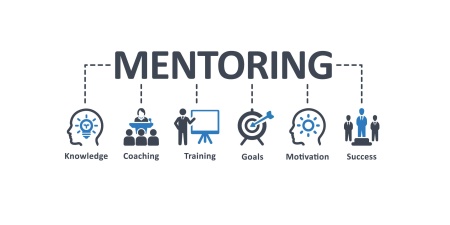Effective leadership starts at the very top of your organization and permeates down through the staff. Attitude reflects leadership. I can walk into a business and know within the first two-to-three minutes what kind of leader that company has. The leader sets the tone for the business and if I walk in the door and am instantly greeted by a smiling associate who says, “Thank you for coming in today, sir. We’ll be right with you!” I know that there must be a pretty effective leader.
If you, as the owner or boss, come around the corner and find that your associates act like Houdini and disappears, that’s a pretty good indication that you might have a problem. It doesn’t cost anything extra to treat your associates with dignity and compassion. In fact, it can actually make you money. Employees who feel valued will naturally work harder and take more pride in their jobs than those who feel demeaned or intimidated. Here are some effective leadership techniques that I have learned over my long career in this industry.
Attitude Trickles Down
If a manager’s first instinct is to jump down the throat of an associate every time something doesn’t go exactly as planned, it’s no wonder why they will scurry the other way every time they see you coming. Instead of screaming, “WHY DIDN’T WE MAKE THAT DELIVERY YESTERDAY?” consider calmly and respectfully addressing the question directly with the employee. There’s a good chance there’s a valid reason.
“Hey, I noticed that we didn’t get our eight deliveries made yesterday. Was there a reason why we missed ABC company yesterday?”
“Yeah, boss, there was a huge tie-up on 635. They shut the freeway down and the company closed at 5:30. We weren’t able to get there but I called and told them what the situation was and that we would bring the delivery first thing tomorrow.”
That’s a whole lot more productive of a conversation than just jumping on somebody. If you treat your associates with respect, that’s how your associates will treat your customers when you’re not around. If you have ten branches, you can’t possibly be at all of them at once. But if you create a culture of respect, you can be sure that your managers will treat those customers with that attitude when you aren’t there.
The Little Things Make a Big Difference
I addressed this in my last article, but remember the dates of hire of your people. Pick up the phone and congratulate them on that anniversary. If you have an organization of 600 and you can’t personally call everyone, make sure somebody on your management team does. Congratulate your people on those milestones. That means more to an associate than just about anything. Reinforce that positive recognition and let them know that you value them and that they are a valuable member of your team.
Share Information With Your Team
I think an effective leader shares information with the company. We used to post, every month, what our sales goal was for that month. Not the profit margin or what our expenses were, just the sales number that the management team would determine. We would post that number so that everybody in the company knew what our goal was for that month. And at the end of each month, if we had hit that goal, everybody in the company from the president on down got a $20 bill. And at the beginning of the month a couple of branch stores might call in and ask how we were progressing toward that goal, but by the end of the month, if we hadn’t hit yet, our AR department’s phone was ringing off the wall. You would have drivers telling the salespeople, “Go out and get that last order. We’re so close to getting our $20!” Share that information with your associates. Everybody should share in the wins.
People Do What You Inspect, Not What You Expect
If something is important enough for you to track it, make sure you follow up on it. So many times, we just send information out to our associates and then we never follow back up on it. If there is no follow up, a lot of times the attitude is, “If it’s not that important to the boss, and they’re not even going to ask about it, then I’m not really going to worry about it either.” If you expect people to take the time to do something, make sure you take the time to inspect it. You do that simply by asking questions. Our salespeople were expected to fill out this call report log each month. And I would look at them and read them and go back and say, “I saw where you visited this client the other day. Tell me about that call.” That makes a difference.
A Good Leader Isn’t Afraid to Leave Their Comfort Zone
Take time to get out of your comfort zone. Ride on the truck. Put on the steel toed shoes and the blue jeans and go out on a route. You can learn more about your service levels and your associates’ attitudes toward customers in one day in the field than you can in eight months sitting in management meetings. If you have created an atmosphere where people want to talk to you and be a part of the successful company, they will tell you. And you’ll learn the challenges they face first-hand.
The First 90 Days Are Critical
I believe that the most critical time for a new employee is the first 90 days. I encourage them to ask as many questions as they possibly can about the company, our business and our industry. If they ask us a question and the only answer we can give is, “That’s the way we’ve always done it,” that’s not a very good answer. We owe our employees a better answer than that.
We’re only as successful as we can make our associates successful. I truly believe that. A good leader sets the tone of the organization and then gets out of the way. Surround yourself, as much as possible, with people smarter than you. Your main responsibility, as a leader, is to set a direction. Where do you want your company to be in five or ten years? And then share that information and set the company on a course to achieve it. And if the winds change, it’s your responsibility to make adjustments. The most important asset that we have as a company is our people and it’s the leader’s responsibility to make sure those people are performing to their peak capability.








